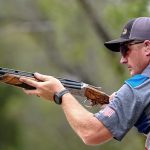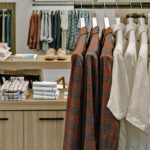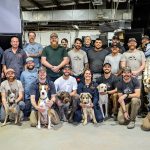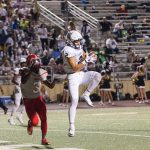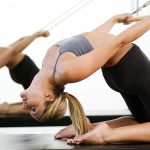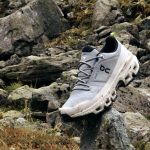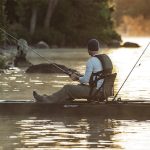Well, we survived another one. Another Summer Market that had too many things to see and too little time to see them. But once again, The B.O.S.S. Report pulled off a marathon adventure at Outdoor Retailer, emerging with the impression once again that our little slice of heaven is indeed in fine shape and still the place to be.
Show management worked hard over the last six months to ensure that talk of the future of the show and its potential move would not dominate the talk on the floor.
Show management announced just prior to the show that both the Summer and Winter markets would stay in Salt Lake City through 2009, a decision that is still contingent upon a final contract and financing from the city to expand the Salt Palace Convention Center.
The announcement was timed with a vote by the OIA board that recommended that the show stay in Salt Lake.
Of course, OIAs recommendation was contingent on one set of factors, namely the state of Utahs “continued partnership with the OIA to promote a recreation economy and to protect its recreation gems”, while ORs parent company, VNU Expositions, the largest trade publisher and trade show producer in the world, made its decision based on the purely economic factors of “how many more booths can we sell” and “how do we keep the customer happy”.
Peter Devin, OR Show Director, has been credited with walking that tightrope over the last year, addressing the needs of his bosses in New York and Europe, while attempting to satisfy the needs of the exhibitors and the retailer attendee.
Frank Hugelmeyer, president of OIA, continued to lay out the organizations agenda of supporting recreation-based economies, and emphasized to the Salt Lake City press and government officials in attendance how important this issue is to the future of OIAs continued support.
Hugelmeyer also gave a tremendous amount of credit to Utah Governor Walker for her work and continued cooperation with the OIA.
“During the past year the OIA and Governor Walker have made significant strides She has taken a framework and turned it into a working task force identifying and protecting Utahs recreation gems,” said Hugelmeyer. “We understand that Rome wasnt built in a day and we are going into this with an open mind, but we have great expectations for returns, and we expect places to be protected.”
VNUs decision was made all that much harder by survey results that showed both exhibitors and retailers alike favored staying in Salt Lake City rather than moving the show. Trouble is, many of those exhibitors — and many more on a waiting list were also looking to expand their presence in the confines of the current Salt Palace convention center.
Devin and his team were able to negotiate a deal that has the city spending millions to enlarge the Salt Palace by more than 40% on the main show floor by Summer Market 2006, while the OIA received commitments from the state on public lands and assurances that attendees would have more perks in SLC such as lower hotel room rates, enhanced shuttle services to and from the airport, and the launch of “Outdoor Utah” — an outreach campaign to attract retailers.
An informal poll taken by BOSS during the show saw universal support for the decision that could have seen the Outdoor Retailer show move to Reno, Denver, or even Las Vegas. The word on the floor at the Summer Market was nearly unanimous, with just one vendor suggesting he hadnt time to think about it. Every vendor that BOSS spoke with said they were happy the show did not move to Vegas. Nearly everyone was also happy about the planned expansion and several key vendors are now looking for larger booths.
“I know what its like to be out in the Pavilion,” said Mike Fattori, the VP of Sales and Marketing at Princeton Tec. “Its great that they will be able to bring everyone inside and level the playing field.”
If the decision were made on purely economic grounds, VNU would have simply pulled up stakes and moved the show to Vegas, which only has one saving grace in its proximity to Red Rocks and good climbing. Sure, the exhibitor would have gone, at least initially, and would have constructed ultra-mega-big trade show booths to fill the space, but the roll of the dice would have been the whether the retailer would follow. Twenty-four hour neon, hookers, and strip clubs just dont seem to be the draw for our industry that attracts others to the city of lights.
“What we are looking to do is find a way to best service our customers,” said Devin “Many of you have different agendas pulling you in different directions. All we do is produce tradeshows.”
BOSS worries that the show could falter anyway as it gets bigger and is able to start allowing some of the fringe exhibitors on to the show floor. Few will be successful, which will lead to continuous turnover on the main floor rather than on the outskirts of the show where many pay their dues as they first pitch their goods. We have seen what happens to shows when they get too big, too spread out, a reality we have seen play out at Super Show, the NSGA Show, and more recently the WSA shoe show. All must attend shows in their prime, but shows that faltered once they tipped the scales to size versus quality.
Quality of the experience will be of primary importance as we move forward. There are still far too few hotel rooms in a city that hosts this show, but has little else to support the rooms the other 358 days of the year. Lee Fromson, chairman of the OIA, also pointed to the need for programs to get the retailer to the show. “How many more people would come to the show if they knew they could see Bruce Springsteen play as well,” said Fromson, alluding to the very successful industry party format at WSA that brings the show together in one place the first night for dinner and a concert.
Those are the types of questions that will need to be asked over the next few years. How do we get more retailers here, where do they stay once they get here, and how do we keep them coming back?
Devin did issue one caveat. If SLC does not maintain its stated time-line for expansion or if it does not follow through with a satisfactory contract and financing from the county, then OR will be forced to begin its search for a new location where it left off.
As one other OIA board member pointed out, the new commitment to Salt Lake is also a lot shorter that it first sounds. If you think about it, the current contract runs through 2005, so we werent going anywhere next year anyway. The Salt Palace expansion wont be completed for two years, which really means that we start talking about another move after the first show in the newly expanded facility. Sounds like all those other questions will need to be addressed sooner rather than later.
At first glance, it may seem the move to expand the show space is an effort to broaden the number of exhibitors and the types of products shown at the show, but after a few hours at the show on Thursday, it became quite evident that a number of exhibitors need the space to simply show off the rapidly expanding product lines as they made real strides toward capturing more of the consumers purchasing dollars.
Whether it was traditional equipment companies moving into footwear (and apparel), or apparel companies moving into footwear, or footwear companies moving into apparel, it was clear that many of the exhibitors have made very conscious decisions to expand categories in a flat market.
The move to more street-friendly streetwear was clearly a redline theme BOSS saw at apparel booths throughout the show. The once blasphemous position that outdoor apparel must be designed primarily for use in the strenuous pursuit of ones chosen outdoor activity has given way to the more pragmatic position of attempting to capture the consumers dollars for activities off the mountain as well.
Some vendors are clearly better than others at staying true to their brands image and level of quality or technical attributes, adding more fashion appeal to their traditional offerings, while others have taken a softer approach, creating real sportswear collections for down time. BOSS sees sound positioning in both approaches and it appears from our conversations that retailers are starting to wake up to the fact that they have been sending their consumer down the street for 90% of their purchases.
Regardless of the positioning, it quickly became clear that the apparel and footwear companies jumped into color with both feet at the show, finally tiring of the same black and brown offerings of the past. Oranges, pinks, and blues ran through both mens and womens lines, which will only serve to liven up many a usually dull presentation at retail next spring.
Another interesting side effect to this move to fashion is a trickle-up phenomenon. Technical soft-goods are starting to show more fashion like the western flair exhibited in many of Cloudveils pieces, and even some hard goods are showing more color and patterns.
A prime example is Grivels fifth iteration of leashless ice-tool, the Monster, designed specifically for the latest generation of ice climbers who find themselves using ice-tools on rock more often than on ice. Aside from the technical features that make this tool, the company has added several graphic options to the shaft including paisley, polka-dots, and snake-skin.
Part of the driving force behind this move to fashion is also the shift of the climbing market into the urban environment.
More climbers are focused on the bouldering scene, and with this shift, more climbers are living in the urban environment and commuting to the crags for the weekend. Blurr, based in Canada, was one of the first companies to realize that most rock climbers dont want to dress like alpinists anymore, and has launched a new ad campaign with a very distinct urban image to it. Black Diamond, through their Franklin Climbing brand is also looking at this market as an area of potential.
In the world of outdoor lifestyle apparel, it seems like every company with its roots in technical apparel has launched a line in this market, but the companies who specialize in this niche are the ones that are driving the trends. Companies like Horney Toad, PrAna, Patagonia, and Kavu have practically banished the drab outdoor greens and grays of old and livened up the world of outdoor fashion.
The skirt is making a comeback into womens outdoor apparel, while mens apparel is following the metro-sexual trend and becoming more fashionable.
Details like embroidery, color, and unique eco-friendly materials like bamboo and organic cotton have livened up the selection. Whereas a few years ago, outdoor apparel was judged strictly by the twin mantras of waterproof-breathable and wicking, today the outdoor industry has added drape, texture, and style to its vocabulary.
Horny toad, as a lifestyle company, has also launched a unique marketing and sponsorship program. Instead of jumping on the adventure racing band-wagon, the company has decided to sponsor artists and musicians to promote the companys culture and the outdoor feel.
The continued move to ultra-lightweight everything was also a key theme throughout the show, and one that has had a profound impact on some brands positioning in the market. Clearly, the move the ultra-lightweight apparel is not new, but vendors certainly pushed hard once again at Summer Market to take it to a new level.
GoLite continues to be the market leader in the ultra-light niche, with their entire line dedicated to telling the story of lighter and faster. The company celebrated its fifth anniversary in style at OR with a soul-stirring toast from co-founder Demetri Coupounas. The company is expanding its womens apparel line, and has signed some new partnerships for their cycling apparel line.
Big Agnes, a sleeping bag and tent company out of Steamboat Springs, Colorado, showed some very lightweight tent designs, and has produced some interesting single/double-wall hybrid product that pushes the weight barrier for two person free-standing tents into the two pound range.
Perhaps the constraints of the shoe wall, or perhaps the realization that a lot more shoes are sold for kickin around town than climbing mountains, gave birth to another key trend BOSS saw throughout the show. Whether you call the category Multi-sport, Multifunction, Fastpacking, or Adventure Sport, the move to lighter, faster footwear with traditional outdoor footwear elements was seen at most footwear vendors.
The other key trend in footwear was the prevalence of water sports inspired product. It was if someone from on high warned of a great flood approaching and each footwear company scurried to create their interpretation of footwear that drained water. If you made the rounds, you all now know that these shoes have mesh sidewalls and perforated insoles, but some took the next step in creating channels in the midsole and outsole to facilitate even more drainage.
As we saw at WSA, some of these companies came from their traditional angle in boat shoes (think Sebago, Timberland, Sperry), while others came at it from their roots in water sandals (think Teva, Keen, Bite). BOSS even found a traditional apparel company presenting their entrée into the water sports footwear category from their long history as a sailing brand.
This week, BOSS will focus on the hardlines companies, something we find more difficult to do each season as more companies add apparel and footwear categories and start to provide total packages for the retailer.
The word on the floor was that the backpacking market is in quite a state of upheaval right now. The overall market remained flat this past year, as it has for the past several, but there are some definite shifts in market share among the higher performance brands. Several retailers told BOSS that both Osprey and Gregory are coming out on top with strong sell through in most of their mid-sized and lightweight product.
Paul Gagner, VP Sales and Marketing at Gregory, told BOSS that he saw more differentiation among the top brands, which keeps the “commodity equation” to a minimum. He said that the Good, Better, Best strategy has played out and said that brands had to stake out their territory. Gagner said that Gregory got “too close to the middle four years ago and needed to drive the brand to the premium end of the spectrum.
Gagner saw a number of innovations coming out of the adventure racing market, ideas that spawned the companys Wraptor Stabilizer, which was built on the need to reconcile easy access and stability in a pack.
Gagner pointed to assuring the proper balance between lightweight and durability as a key element in their design, also stressing that comfort and stability can also have a profound impact on the perception of weight. A good fit, and putting more weight on the hips, is more important than a few ounces taken out of the bag.
Most vendors told BOSS that the market for large packs has all but evaporated in the high-end and higher price product. The move to ultra-light in packs, bags, stoves and tents has made large volume backpacks obsolete for all activities but multi-week expeditions. The only other exception to this is the family market, and vendors like Cerro Torre and High Sierra are seeing some solid growth in the lower-priced high volume performance backpacks.
Indigo Equipment is continuing their diversification and expansion into the summer market. The designers behind this small Wyoming-based brand have been refining and perfecting an interesting new feature that allows access to the bottom of the pack while still wearing it, called the Café Pocket.
The tent market is becoming more and more segmented for Mountain Hardwear with five categories now – Family tents, All-Mtn tents, superlight tents, Alpine tents and expedition tents.
Atrium 4 and Atrium 4CF are MTHs first introductions in the 4+ person family car camping market.
Mountain Hardwear has a new partnership with Yunan Aluminum and the two companies developed a new tent pole design that strengthens joints by 30% and lightens total pole weight by 45%. The new product is completely field repairable and more compact than old design. They are using a scandium alloy in super-light models. Easton is still used in the expedition models.
In the sleeping bag category, MTH introduced new welding technology, new insulation, and a new bonding technology that joins this new insulation to the shell of a sleeping bag. All of this new technology has started a new category for MTH the Lamina series. This uses Thermic CF insulation bonded to the shell to eliminate the need for baffles. MTH now sells 36 different models of sleeping bags, not counting the two upgrade bags.
Jet Boils President, Dwight Aspinwall, said that his company – which received so much attention at last years Summer Market – is expanding their product offering into accessories, and has some further plans for next season.
The companys product line still revolves around the stove introduced last year, and there was still quite a buzz around the booth, with retailer waiting in line for a demonstration.
MSR launched a product very similar to Aspinwalls, except it runs off of white gas and employs a very innovative ceramic disc to control fuel flow through the stove.
While the advantages to these ultra-efficient stove designs are clear when you see them in action, retailers feel that not all consumers are jumping in with both feet. With more than one product in the display cases this year, and a little healthy competition, hopefully this innovative new product will get the marketing it deserves.
MSR is also addressing the trend in the camping market towards more family and friend oriented activity. More and more people are car camping at areas with multiple easily accessible recreation opportunities, and MSR launched a full-sized portable two burned car-camping stove that will give the outdoor community an option other than Coleman for this type of product.
CDs CEO Lee Fromson said he had no problem taking a piece of the tailgate party crowd market either.
Another interesting development in the camping market is that consumers are willing to pay more for pre-packaged meals, assuming they get more. Backpackers Pantry launched a line of gourmet meals last year with better ingredients, and retail prices nearly double the traditional price-point. Surprisingly, there was a very solid response as the higher prices are helping retailers to transform the camp food section into a profit center instead of a service area for customers.
Eureka has a new tent designed to make camping easier for people with disabilities. The Freedom tent employs several key features like a zipper-less, easy to use door that provides access to a vestibule large enough for mobility devices; pull handles on the door and windor zippers; and continuous pole sleeves originating from one side of the tent. The company has three main tent categories now: Outdoor, Superlight and Family.
Johnson Outdoors entered into a new partnership with THULE to design a lift assisted kayak car-top carrier called the Hullivator. Thules president Fred Clark told BOSS that Johnson Outdoors approached Thule with the concept and the two companies worked together to develop the finished product. Thules Envoy program will also get a boost from the new relationship. Beginning in 2005, key Midwest destinations will be added to Thules mobile marketing program, which includes consumer events and retail clinics.
Both the Thule Hullivator and Watermarks new product, The E-Z Load, address one of the key barriers that women and baby-boomers have expressed about paddlesports participation ease of transportation.
Watermark acquired E-Z Load Technologies shortly before the opening of the Summer Market. E-Z Load technologies has been showing this same product at OR for several year, but now with the marketing machine of Watermark behind the product, it has received more attention than ever before.
BOSS also heard in the aisles that Talon, the parent of E-Z load Technologies, pitched the technology to Thule, but passed and developed a different system.
Both products have their advantages and disadvantages. The Hullivator, currently only carries boats, while the E-Z Load can carry nearly anything you can bolt on to it.
However, the E-Z Load only allows you to use half of your roof rack, while the Hullivator allows the use of both sides. Additionally the Hullivator allows the user to lower a boat to waist level on most SUVs while the E-Z Load stops at around shoulder level.
Smith Optics showed off its new Smith Action Optics re-branding (formerly Action Optics See BOSS_0332). Ned Post, Smiths president and CEO, said that the new brand will be more in-line with the outdoor theme that for which Smith is known. He also said that sunglass styles are moving away from the bold, sport-inspired look, and becoming more subdued and conservative.
The Extrasport division of Johnson Outdoors has expanded from PFDs into the world of performance Watersports apparel with a line of dry-tops, spray tops, and paddle pants. The big story coming out of the JOUT booth was the fact that all of the boats displayed on the floor were available for delivery, including an innovative whitewater boat with a suspension system designed to protect the ankles.
Dakine showed up at OR with their usual assortment of free-ride inspired hydration packs and surf/urban accessories, but also showed off some interesting innovations in surf pack design. These new features, which include a removable wetsuit storage sleeve, have real crossover potential into the white-water and kayak touring markets.
The headlamp market has become a battleground for technological superiority between Black Diamond, Petzl and Princeton-Tec. All three companies showed several unique innovations; however Princeton-Tec takes the prize for LED power with the introduction of a new three watt LED, whereas before the limit was one watt.
Another small company that was making waves at OR, and in desperate need of a larger booth, was High Gear. This company has taken their intuitive design philosophy for outdoor electronics and branched out from the altimeters and weather instruments that have been its mainstay for several years. This season the company introduced a new heart-rate monitor and was the only company BOSS saw that released an outdoor-oriented MP-3 player.

